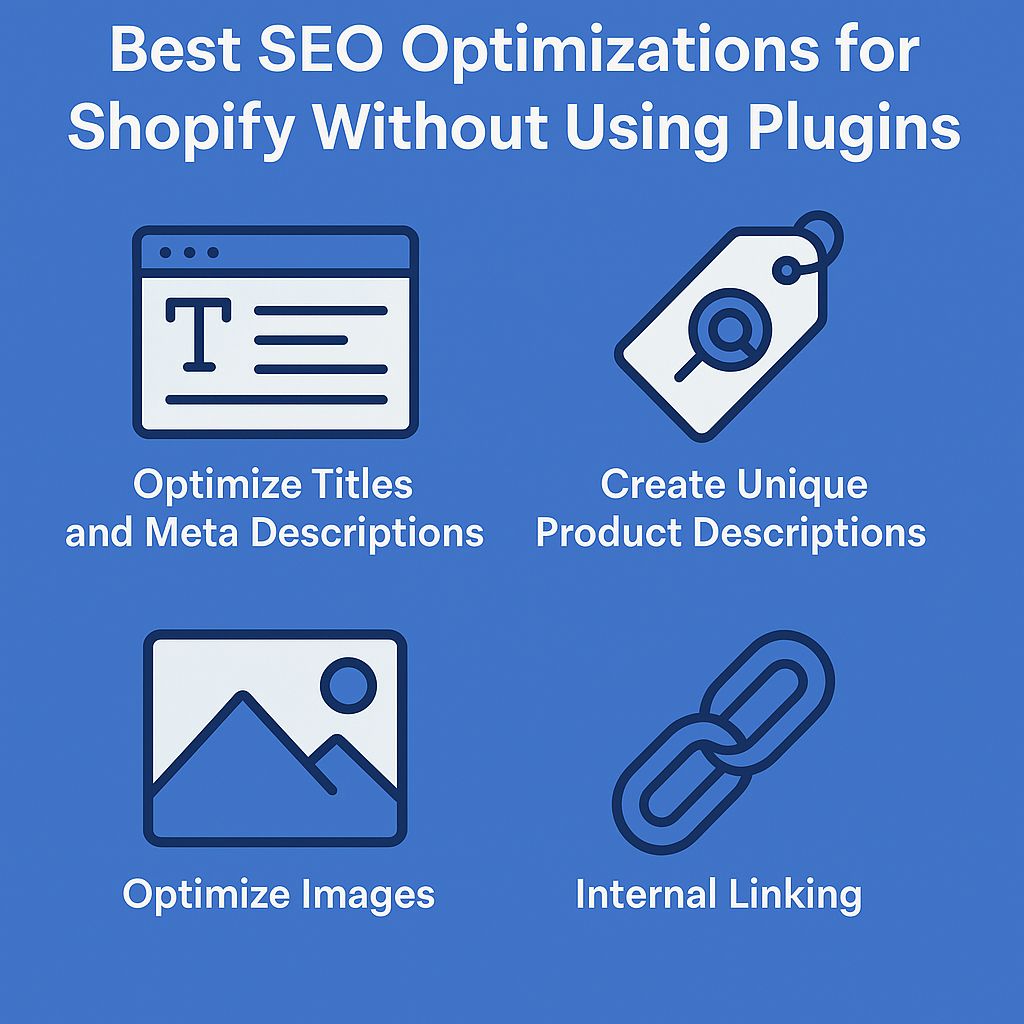Shopify is known for its simplicity and speed, but optimizing your store for SEO without relying on third-party plugins requires a bit more attention to detail. Fortunately, many of the most effective SEO strategies can be implemented directly within Shopify’s native setup.
Here’s a breakdown of the best non-plugin SEO optimizations for Shopify store owners:
1. Optimize Titles, Meta Descriptions, and URLs
Start with the basics: craft clean, keyword-rich product titles and meta descriptions that accurately reflect your content. Avoid unnecessary words in your URLs—short, descriptive slugs work best. This improves click-through rates and helps search engines understand your page structure.
2. Create Unique Product Descriptions
Avoid copying and pasting manufacturer content. Instead, write unique product titles and detailed descriptions with both primary and secondary keywords. This not only helps with SEO but also enhances the user experience and improves conversions.
3. Use Header Tags Properly
Structure your pages using header tags (H1, H2, H3, etc.) to create a clear content hierarchy. This helps search engines better understand the organization of your content and makes your pages more accessible.
4. Image Optimization
Compress your images to improve site speed and add descriptive alt text that includes relevant keywords. Fast-loading pages reduce bounce rates and contribute to better search engine rankings.
5. Internal Linking
Add internal links between products, blog posts, and collections to help both users and search engines navigate your site. It distributes link equity and improves crawlability.
6. Manual Schema Markup
While Shopify doesn’t offer robust built-in support for schema, you can manually add structured data to your theme files. This helps search engines display rich snippets (like product ratings and prices) in the search results.
7. Fix Broken Links and Add Redirects
Monitor your site for broken links and use Shopify’s native redirect tool to maintain link equity and avoid frustrating your users.
8. Write Informative Blog Content
Regularly publishing blog content that addresses your customers’ questions and interests improves topical relevance and keeps your site fresh. It’s also an excellent way to naturally include keywords and attract backlinks.
9. Improve Site Speed and Mobile Responsiveness
Minimize file sizes, reduce the number of apps or custom scripts, and ensure your theme is mobile-friendly. Shopify sites are generally fast, but unnecessary bloat can slow things down.
10. Stay Consistent
Consistency in content updates, URL structure, and on-page SEO practices plays a major role in long-term SEO success. Shopify gives you a solid base—use it wisely.
Final Thoughts
While Shopify may not offer the same level of technical flexibility as some other platforms, you can still implement strong, results-driven SEO practices without relying on plugins. With attention to on-page content, internal structure, and user experience, your Shopify store can perform exceptionally well in organic search.



